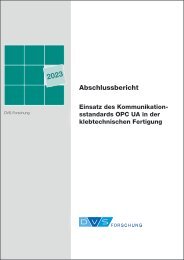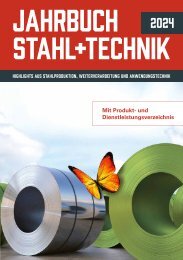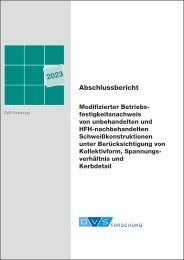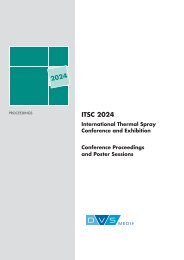Sie wollen auch ein ePaper? Erhöhen Sie die Reichweite Ihrer Titel.
YUMPU macht aus Druck-PDFs automatisch weboptimierte ePaper, die Google liebt.
1 Introduction<br />
1.1 Why an IIW <strong>Phased</strong> <strong>Array</strong> Handbook?<br />
Industrial phased arrays have been in development for decades, following medical phased arrays<br />
and other areas like radar, sonar and geophysics. In the past, a small market, difficult data<br />
manipulation, crude software, and extensive training and experience requirements have hampered<br />
the wide use of phased arrays for industrial applications. The first industrial commercial phased<br />
array systems appeared in the early 1990’s, but were large, expensive, and required good software<br />
skills. Most of these units were used in the nuclear industry on specific advanced applications.<br />
Currently, the phased array industry is maturing rapidly and phased arrays are becoming pervasive<br />
in inspection markets worldwide. This is true both for industrial field applications as well as for<br />
more academic applications in universities and research institutes. From a technical perspective,<br />
this is being driven by the flexibility that phased arrays bring to an inspection task, with their<br />
ability to generate a wide range of ultrasonic beam characteristics with one phased array unit. This<br />
has allowed phased arrays to displace other inspection techniques, and in many instances provide<br />
inspection data that is superior.<br />
From a practical perspective, the new phased array systems are relatively easy to use and are<br />
portable, thus allowing easy access to the inspection location. This is in sharp contrast to older<br />
phased array systems that are large, immobile and thus difficult to deploy. Lastly, from the<br />
commercial perspective these systems have now come down in price to a level that they can be<br />
used by organizations that span many different fields. This has also led to a corresponding<br />
lowering of rates that has allowed their usage in many new commercial applications. It is these<br />
factors acting together that have driven the large increase in phased array usage.<br />
1.2 IIW<br />
The IIW is an independent organization that brings together experts from a number of different<br />
industries and countries to work together on projects that are relevant for welded components [1].<br />
Within the IIW there are over fifty member countries that work within sixteen Commissions and a<br />
number of other sub groups. Commission V of the IIW deals with NDT issues; within this<br />
Commission, there are 4 sub-commissions that are focused on different aspects of NDT and report<br />
to the IIW through Commission V.<br />
Sub-commission VC is focused on ultrasonic inspection and in the past has been involved with<br />
publishing Handbooks on a number of different ultrasonic inspection techniques. Examples of this<br />
are the Handbook on the Ultrasonic Examination of Austenitic and Dissimilar Welds, Handbook<br />
Automated Ultrasonic Testing Systems and this Handbook on <strong>Phased</strong> <strong>Array</strong>s. The intent of this<br />
Handbook is to provide a best practices document that can be used by practitioners of phased<br />
arrays as a guideline when configuring and performing inspections. This same Sub-commission<br />
also designed the IIW calibration block that is now ubiquitous in the field of ultrasonic inspection.<br />
This IIW <strong>Phased</strong> <strong>Array</strong> Handbook was compiled by a group of experts, and thus represents a wide<br />
consensus across different industries, with varying academic and industrial perspectives on the<br />
state of the art in industrial phased array inspection.<br />
1


















